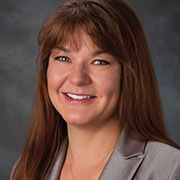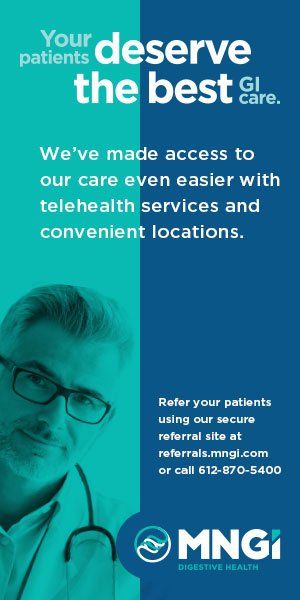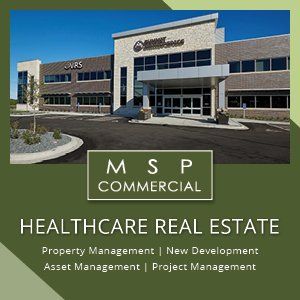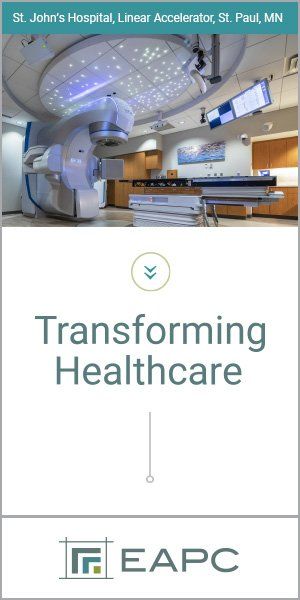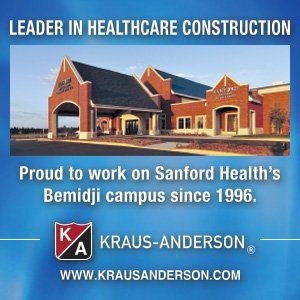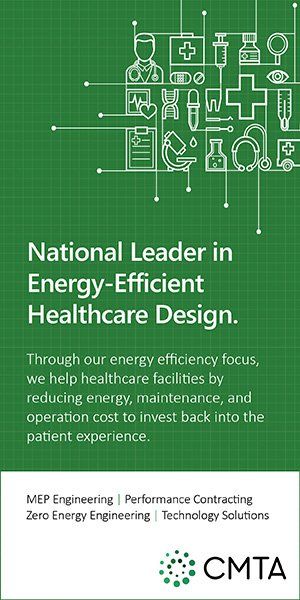Interview
A New Name for an Unchanged Mission
Rachael Perlinger is president of Healthcare Leaders Association of Minnesota and clinic administrator at Northland Plastic Surgery in Duluth
Please tell us how the Minnesota Medical Group Management Association (MMGMA) became the Healthcare Leaders Association of Minnesota (HLAMN).
Founded in 1951, Healthcare Leaders Association of Minnesota’s (HLAMN) roots reach as far back as 1890 with the birth of group practice in southern Minnesota. The first meeting of the National Association of Clinic Managers in 1926 addressed problems of clinic administration. Then called the Minnesota Medical Group Management Association (MMGMA), the early mission was to create a premier professional organization that would include medical practice executives, managers and their organizations to further enable them to recognize and improve the health status of the community of patients they serve.
A few years later a separate and unrelated national association, the Medical Group Management Association (MGMA) formed in Colorado to provide a template for the creation of associations of medical administrators in all states and a roadmap for their operation. The MMGMA became a member of the MGMA and remained one until the state affiliate agreement to use the MGMA brand ended on Dec. 3, 2023. As the national association had grown there were ebbs and flows regarding direction and what seemed to be best for patients and medical practices in Minnesota. The challenges facing medical practices vary widely from state to state and ultimately we, and 17 other states, felt it was best to leave the MGMA and rebrand as the Healthcare Leaders Association, and in our case Healthcare Leaders Association of Minnesota (HLAMN). The new name more accurately reflects our work and mission and we welcome a diverse membership including administrators, CEOs, physicians, office managers, business partners, students and many others.
What changes are associated with this new name?
Other than the name, there is no change to how the association operates and functions, except that we are no longer a member of MGMA. We are the same people with the same mission. We represent hundreds of members statewide offering advocacy, education, information and representation. Our mission includes promoting the role of professional management and the physician/administrative team approach to health care delivery and medical group management. We accomplish this in many ways that include enhancing members’ professional roles, knowledge and skills as well as promoting professional relationships and networking opportunities within the industry. We advocate with elected officials, regulatory agencies and third-party payers to advance the value of group practice in providing accessible, sustainable and high quality health care in Minnesota.
Organizationally, HLAMN consists of an executive committee, board of directors and members — regular, student, lifetime and affiliate. The executive committee is composed of a president, vice president, secretary/treasurer and past president. All officers are elected by the membership and act as the decision-making body of the HLAMN. The board of directors includes the executive committee members, the chairpersons for all the committees and the liaison positions. The board makes recommendations to the executive committee and is also given direction, following organizational bylaws, from the executive committee.
All of our work has a patient centric focus.
Please tell us about some of your legislative agenda goals.
Legislative representation is one of our primary missions, and HLAMN’s Government Affairs Committee (GAC) keeps our members informed of the latest developments that may impact our practices. Every year there are dozens of bills related to health care and new ones that need to be introduced. Each year GAC determines its legislative priorities six months in advance of the start of the next session and develops strategies to advance our interests. We often collaborate with other membership organizations within health care, such as the Minnesota Medical Association (MMA), to deal effectively with challenging issues for medical practices. HLAMN retains a professional lobbying organization toward that end, and all of our work has a patient centric focus.
Recent work has involved improving access to care by insuring independent practices are not excluded by narrow networks. We work to reduce administrative burdens created by prior authorizations and to put decision-making for patient care back in the hands of the physician where it belongs, instead of with payers or legislators. Our work includes meeting with legislators so they can hear real stories about how a health care practice operates; we also mentor administrators on working with legislators.
How are you enabling improvement in health status of the communities you serve?
There is a huge disparity between health care delivery in the metro area and in greater Minnesota. One of our goals is to assist entities that provide health care within a rural footprint. There are many ways to improve health care in smaller communities, and one avenue down which we have found success is sending specialists out into these smaller communities. It may be that a patient requires advanced diagnostics or procedures that must be delivered at a larger facility but at least we are helping them address their issues earlier on when odds for successful treatment are better.
We are working on the front lines of increasing access to ambulatory care in outstate communities. Through collaboration with organizations like the Minnesota Ambulatory Surgery Center Association (MNASCA) and through legislative initiatives we are committed to ensuring that freestanding surgery centers are available for safe, affordable and advanced surgical services to patients throughout the state.
Another leading method of improvement involves telehealth. We are advocating at every level for increased access to these services as well as increased reimbursement. On both a federal and state level the pandemic proved the technology saved money and improved care. There is a clear will to extend the levels of coverage and payment for telehealth, and we are actively working to assist this process.
What are some of the biggest challenges facing health care delivery in Minnesota?
The biggest challenges relate to an increasingly complex administrative burden. This covers a wide range of issues including delay of care, reimbursement, and consolidation of payers and health systems. These problems are compounded by significant workforce shortages that include both professional and nonprofessional staff at every level of health care delivery.
Access to specialty care is a big problem in greater Minnesota as is access to mental health services. This can lead patients to delay seeking care until they have much more difficult conditions to cure. Other challenges stem from inadequate reimbursement from both a Medicare/Medicaid and a private insurance perspective.
What are some of the ways HLAMN is helping to address these challenges?
We have an active payer-relations committee (PRC) that works directly with each health insurance plan as well as a government affairs committee (GAC) to address problems legislatively when they cannot be solved any other way.
One recent example involves BCBS MN and its policies around modifier 25 CPT coding. In instances when a patient came in for a brief outpatient visit for one thing and the physician found another concern that could be treated during that visit, the bill would be appended with a modifier 25, in addition to the procedure code. In this case, depending on product line, BCBS MN would reduce the reimbursement for the brief outpatient visit by 20% to 50%. CMS notes that modifier 25 is used to indicate that a patient’s condition required a significant, separately identifiable evaluation and management (E/M) service above and beyond that associated with the reporting of another procedure or service by the same physician or other qualified health care professional (QHP) on the same date. This service must be above and beyond the other service provided or beyond the usual preoperative and postoperative care associated with the procedure or service that was performed on that same date, and it must be substantiated by documentation in the patient’s record that satisfies the relevant criteria for the respective E/M service to be reported.
Clearly this should not be grounds for reducing provider reimbursement. The MMA has done extensive work to address this, as has our PRC.
Are there other examples you can share?
CMS imposes rules and regulations nationally across the health care industry that are sometimes unfavorable for rural health care delivery. They are aware of this and host “Rural Road Trips” across the country as listening sessions to build partnerships and learn more about the challenges faced by Medicare, Medicare Advantage and Medicaid enrollees in rural areas. We are in CMS Region 5, and this summer we were invited to participate in the one and only regional listening session of their road trip. CMS conducts rural road trips to each state in Region 5 every three years. They usually focus on rural hospitals but this year asked HLAMN to hold a listening session with them.
We met in Duluth on June 14 and had an audience of practice administrators and physicians representing primary and specialty care from the Duluth area, central Minnesota and southwestern parts of the state. After we discussed the challenges, CMS offered insights on how to press for change. They discussed their 1-800-Medicare phone line and encouraged us to have patients call when struggling with prior authorizations with Medicare Advantage plans. They suggested lobbying congress for better Part B reimbursement, as they understood our challenges with the annual decline in reimbursement rates. At the end of our meeting, they expressed that we brought forth actual patient stories and felt that their time with us was very insightful and had examples that they didn’t hear expressed by the hospitals. We were grateful to have been chosen and appreciated the opportunity to help improve rural health care.
Please tell us about your work with diversity, equity and inclusion issues.
On May 25, 2020, the death of George Floyd in Minneapolis was witnessed by the nation, resulting in outrage and action. This response has brought the conversation of racial disparity to the forefront. As leaders of medical organizations from across the state, we witness these disparities in health care and recognize the need for diversity in health care administration. Our communities, families, patients, staff and HLAMN members are affected by these biases.
Our members are in a unique position to affect change among health care organizations. As an association representing medical management in the state of Minnesota, we are committed to serving medical practice executives, managers and their organizations, further enabling them to recognize and improve the health status of the community of patients they serve. The HLAMN leadership, like many of our members, recognizes an important key factor in the health status of our patient communities: the existing lack of equality. Our next action is the commitment to support our members in improving the health status of their communities – and organizations – through listening, learning and offering appropriate education, advocacy, representation and relationship building. This is a crucial issue and one we all must commit to making a permanent part of our engagement.
How physicians can become involved with HLAMN.
While physicians are welcome to become members, unless they are serving in an administrative position this may be too much of an additional commitment to consider. What is much simpler is to communicate with the administrators in your practice and, if they are not already, encourage them to become members. Ask them about the work they are doing with HLAMN and how it can help them provide better patient care. You may be having issues with corporate policies about which the corporations could benefit from learning and then possibly help solve.
At the most basic level physicians can become involved by simply knowing that we are working every day to improve patient care. We are advocating with the legislative and regulatory bodies to advance the concept of group practice with the health delivery system as well as building and creating a repository of data, process and organization design tools to improve health care access and outcomes.
Rachael Perlinger,
is president of Healthcare Leaders Association of Minnesota and clinic administrator at Northland Plastic Surgery in Duluth.
MORE STORIES IN THIS ISSUE
cover story one
Assessing and Advancing Community Health: The overarching value of equity
By Brooke Cunningham, MD, PhD
cover story two
Generation Alpha and Skincare: Health care impact of a new craze





